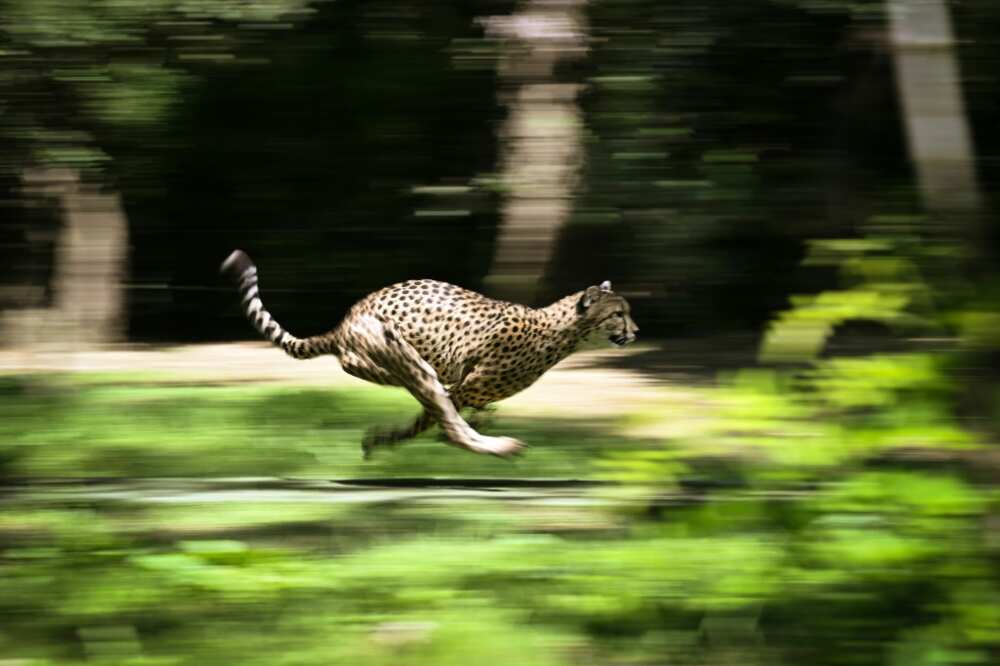Namibian cheetahs head for India, 70 years after local extinction

Source: AFP
Eight Namibian cheetahs were on Friday airlifted to India, part of an ambitious project to reintroduce the big cats after they were driven to extinction there decades ago, officials and vets said.
The wild cheetahs were moved by road from a game park north of the Namibian capital Windhoek to board a chartered Boeing 747 dubbed "Cat plane" for an 11-hour flight.
They will be personally welcomed by Prime Minister Narendra Modi on Saturday, his 72nd birthday.
He will swing open the gates of Kuno National Park, a new sanctuary created for the cats, 320 kilometres (200 miles) south of Delhi.
The 750-square-kilometre (290-square-mile) protected park was selected as a home because of its abundant prey and grasslands.
The project is the world's first inter-continental translocation of cheetahs, the world's fastest land animal, according to the Indian high commissioner to Namibia, Prashant Agrawal.
PAY ATTENTION: Share your outstanding story with our editors! Please reach us through info@corp.legit.ng!
"This is historic, global first. Game-changing," he told AFP. "We are all the more excited because it is happening in the 75th year of Indian independence".
Critics have warned that the Namibian cheetahs may struggle to adapt to the Indian habitat and may clash with the significant number of leopards already present.
But organisers are unfazed.
"Cheetahs are very adaptable and (I'm) assuming that they will adapt well into this environment. So I don't have a lot of worries," said Dr Laurie Marker, founder of the Namibia-based charity Cheetah Conservation Fund (CCF), which has been central to the project logistics.
The project has been in the making for more than a decade. Initial discussion started in the 1990s, she told AFP.
India was once home to the Asiatic cheetah but it was declared extinct there by 1952. The critically endangered subspecies, which once roamed across the Middle East, Central Asia and India, are now only found, in very small numbers, in Iran.
New Delhi has since 2020 been working to reintroduce the animals after the Supreme Court announced that African cheetahs, a different subspecies, could be settled in a "carefully chosen location" on an experimental basis.
The five females and three males, aged between two and five and a half, will each be fitted with a satellite collar.
They are a donation from the government of Namibia, one of a tiny handful of countries in Africa where the magnificent creature survives in the wild.
Negotiations are ongoing for similar translocation from South Africa, a government official told AFP on Friday, with vets suggesting 12 cats could be moved.
Cheetahs became extinct in India primarily because of habitat loss and hunting for their distinctive spotted coats.
An Indian prince, the Maharaja Ramanuj Pratap Singh Deo, is widely believed to have killed the last three recorded cheetahs in India in the late 1940s.
One of the oldest of the big cat species, with ancestors dating back about 8.5 million years, cheetahs once roamed widely throughout Asia and Africa in great numbers, said CCF.
But today only around 7,000 remain, primarily in the African savannas.
The cheetah is listed globally as "Vulnerable" on the International Union for the Conservation of Nature (IUCN) Red List of Threatened Species.
In North Africa and Asia it is "Critically Endangered".
Their survival is threatened primarily by dwindling natural habitat and loss of prey due to human hunting, the development of land for other purposes and climate change.
Source: AFP



